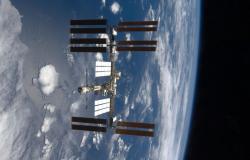Two space agency planes will study how sea ice is affected by clouds and particles in the atmosphere.
With the aim of studying the causes of melting ice, two NASA aircraft fly over the Arctic as part of the ARCSIX (Arctic Radiation Cloud Aerosol Surface Interaction Experiment) field campaign.
“The Arcsix mission aims to measure the evolution of the sea ice cover over an entire summer,” said Patrick Taylor, deputy campaign scientist at NASA Langley Research Center in Hampton, Virginia.
And he expanded: “There are many different factors that influence sea ice. “We are measuring them to determine which ones were most important to the ice melting this summer.”
Around 75 scientists, instrument operators and flight crew work on the mission, whose meeting point is the Pituffik space base in northwest Greenland.
The first deployment is scheduled to document the start of the snowmelt season. Meanwhile, the second deployment will occur in July and August to monitor late summer conditions and the beginning of the freezing period.
“A major goal of Arcsix is to better understand the surface radiation budget — the energy that interacts with the ice and the atmosphere,” said Rachel Tilling, a campaign scientist at NASA’s Goddard Space Flight Center in Greenbelt, Maryland.
As detailed by the space agency, the P-3 Orion aircraft will sometimes fly beneath the clouds to document the properties of the ice surface and the amount of energy it radiates. The team will also fly the plane through clouds to sample aerosol particles, cloud optical properties, chemistry and other atmospheric components.
Meanwhile, the Gulfstream III aircraft will fly higher in the atmosphere to observe the properties of cloud tops, take profiles of the atmosphere over the ice and add a perspective similar to that of orbiting satellites.






